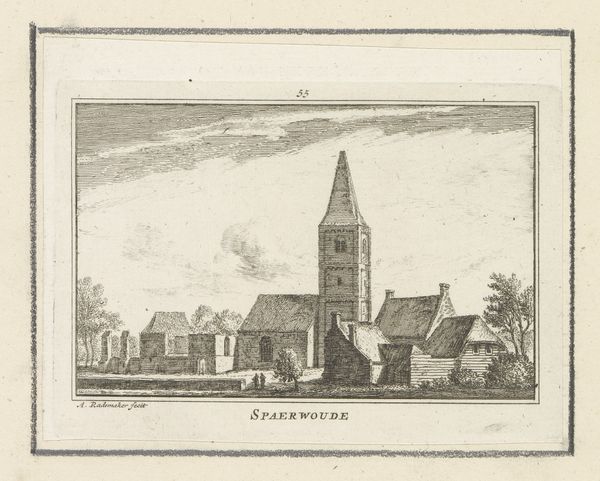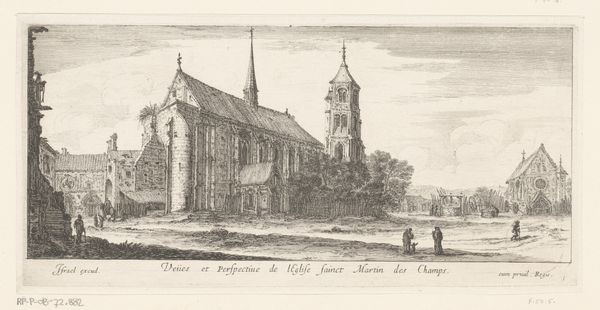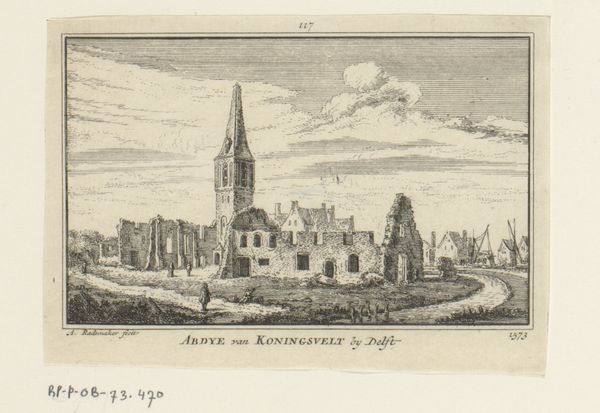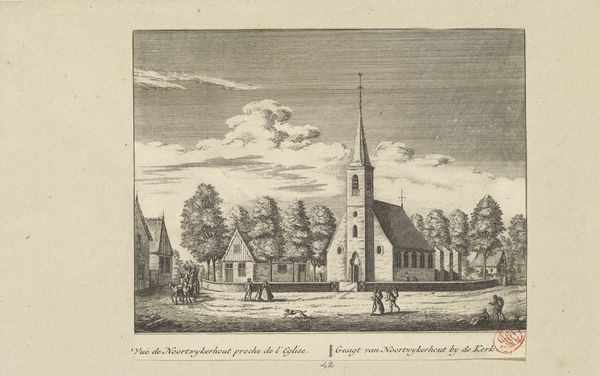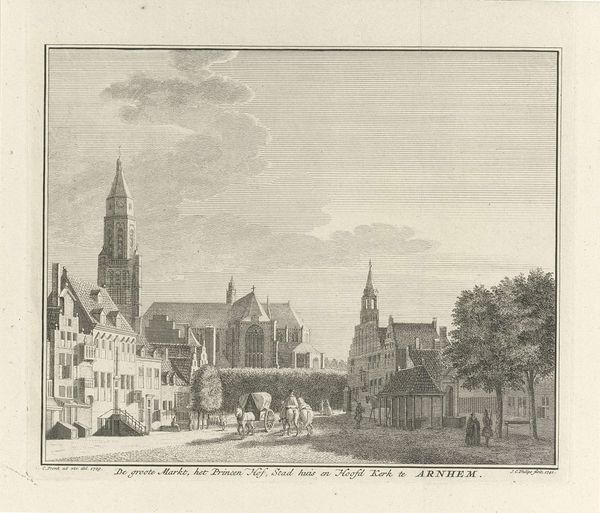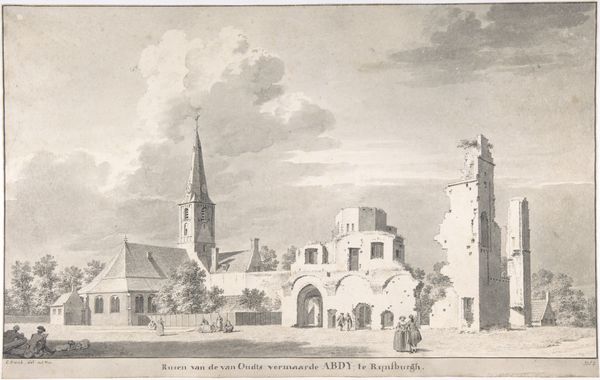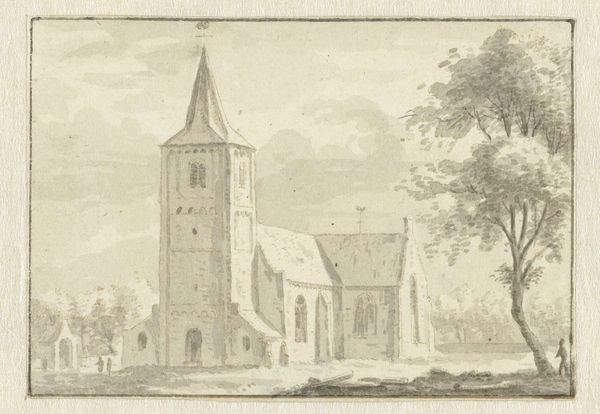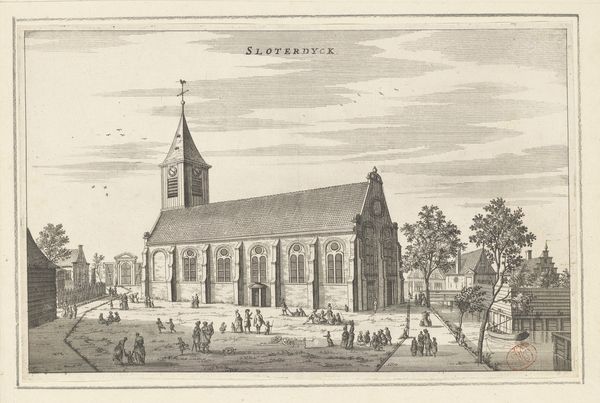
engraving, architecture
#
dutch-golden-age
#
landscape
#
cityscape
#
engraving
#
architecture
Dimensions: height 85 mm, width 105 mm
Copyright: Rijks Museum: Open Domain
Editor: This is Hendrik Spilman's "View of Haringhuizen," created in 1752. It's an engraving depicting a church and village buildings. There's something very peaceful, almost serene, about the way the artist captured the scene. What strikes you when you look at it? Curator: It is deceptively simple, isn't it? What looks like just a picturesque scene of 18th-century Dutch life is, in fact, a carefully constructed statement. Consider the prominent placement of the church. How does that make you feel? Editor: It makes me think about community and faith playing a central role in daily life back then. Curator: Precisely. The church wasn't merely a building, but a symbol. The way Spilman meticulously renders its architectural details, along with the figures approaching it, speaks volumes. Notice the use of light and shadow too; it adds depth, but also imbues the scene with a sense of gravity. Editor: So, it’s not just about representing the village, but also about the values associated with it? Curator: Absolutely. This isn’t mere documentation, it's a projection of societal ideals and a testament to the enduring presence of the Church. Think about it: what might the clouds symbolize? And the spire reaching for the heavens? Editor: The spire could represent aspiration, connection to something higher. And maybe the clouds suggest a constant state of change, life's transience perhaps? Curator: Yes, and those ideas woven together present an idealized, stable community in contrast to earthly turmoil. Editor: I see it differently now. I originally thought this was a quaint little scene. Thanks to your reading of it, I better understand its complexities and historical context. Curator: And that is the power of symbolic imagery—layers of meaning beneath the surface, inviting us to decipher a cultural memory.
Comments
No comments
Be the first to comment and join the conversation on the ultimate creative platform.
